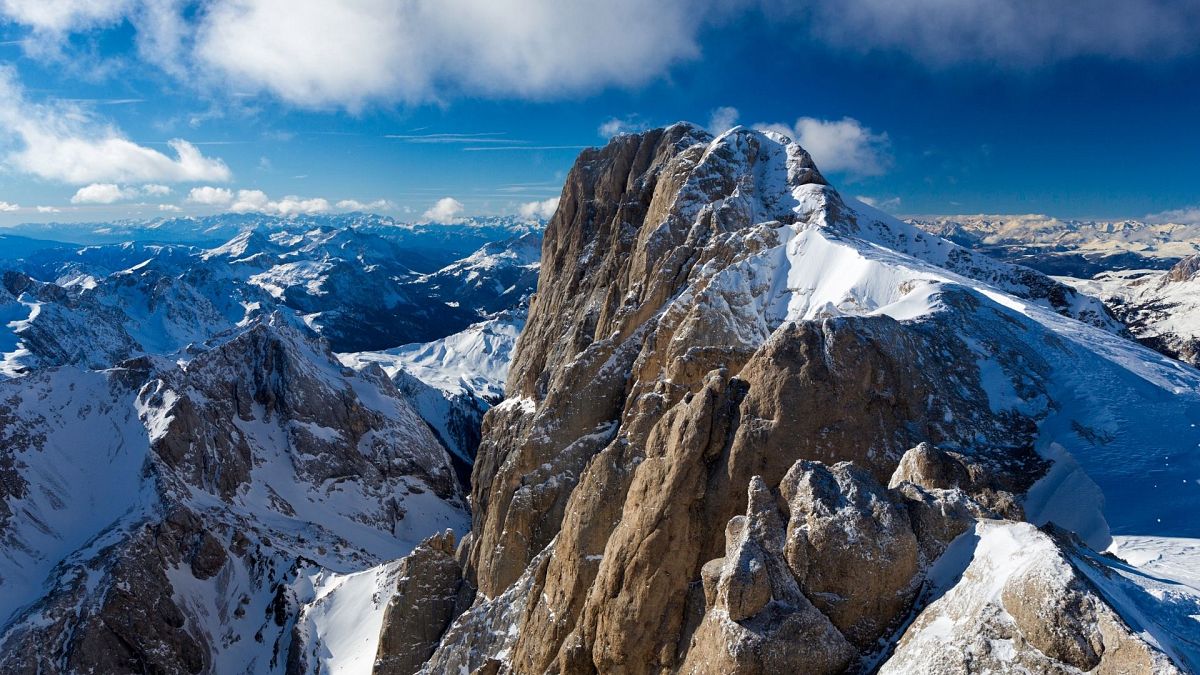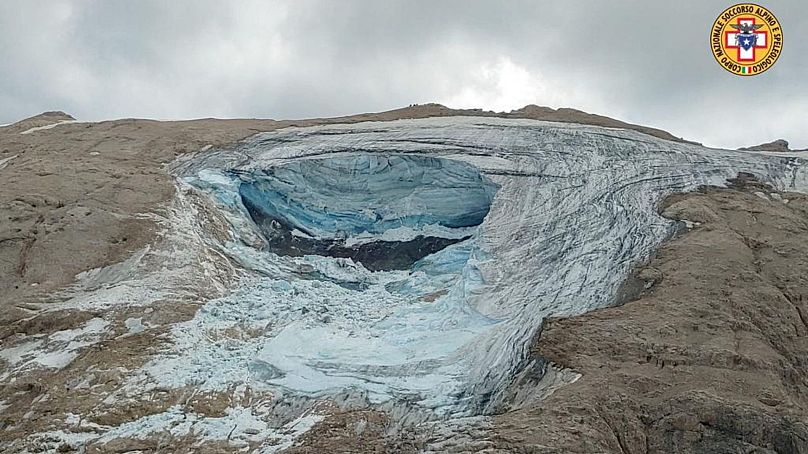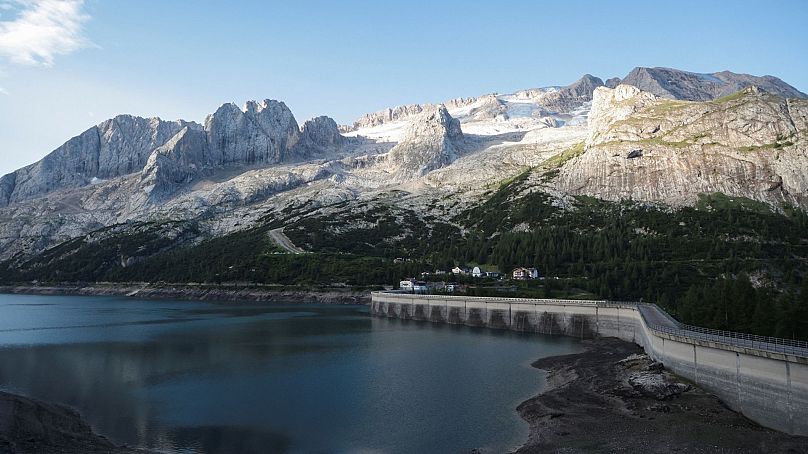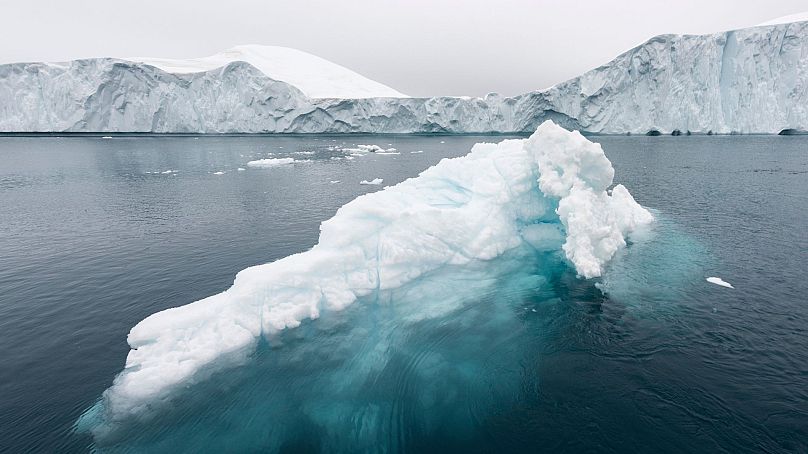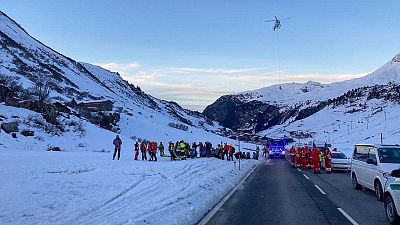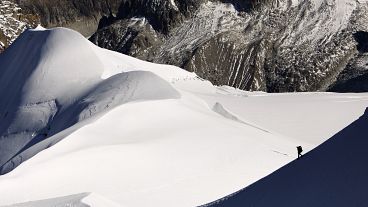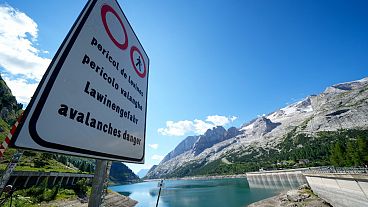An avalanche struck one day after temperatures of 10 degrees Celsius were recorded at the glacier's summit.
An avalanche set off by the collapse of the largest glacier in the Italian Alps killed at least six people and injured eight others Sunday, according to local emergency services.
Up to 15 people are currently missing.
The glacier collapsed on the mountain of Marmolada, the highest in the Italian Dolomites, near the hamlet of Punta Rocca, on the route normally taken to reach its summit.
The disaster struck one day after a record-high temperature of 10 degrees Celsius was recorded at the glacier's summit.
"An avalanche of snow, ice and rock hit an access path at a time when there were several roped parties, some of whom were swept away," emergency services spokeswoman Michela Canova told AFP.
Two of the injured were taken to hospital in Belluno, another in a more serious condition was taken to Treviso and five to Trento.
"The total number of climbers involved is not yet known," said Canova, without specifying the nationalities of the victims.
Helicopters scrambled to take part in the rescue and to monitor the situation from the air. Rescuers in the nearby Veneto region of northeast Italy said they had deployed all their Alpine teams, including sniffer dogs.
Further glacier collapses are feared
Images filmed from a refuge close to the incident show snow and rock hurtling down the mountain's slopes and causing a thunderous noise.
Other footage shot by tourists on their mobile phones showed the greyish avalanche sweep away everything in its path.
The mountain rescue team released images showing rescuers and helicopters at the scene take victims from the valley to the village of Canazei.
Their task was made harder because the bodies were trapped under a layer of ice and rock. A team of psychologists has been made available to support relatives of the victims.
Experts quoted by the 'Corriere della Sera' daily said they feared further collapses of ice.
Glacier specialist Renato Colucci told the Italian agency AGI that the phenomenon was "bound to repeat itself", because "for weeks the temperatures at altitude in the Alps have been well beyond normal values".
The recent warm temperatures had produced a large quantity of water from the melting glacier that accumulated at the bottom of the block of ice and caused it to collapse, he added.
The Marmolada glacier is the largest in the Dolomites mountain range, which is part of the Italian Alps and situated on the northern face of Marmolada.
The glacier, nicknamed "the queen of the Dolomites", feeds the Avisio river and overlooks Lake Fedaia in the autonomous Italian province of Trento.
Melting ice and snow is a major threat all over the world
Ice acts like a protective cover over the Earth and our oceans. WWF explains that these bright white spots reflect excess heat back into space and keep the planet cooler.
So in theory, the Arctic remains colder than the equator because more of the heat from the sun is reflected off the ice, back into space.
About 10 per cent of land area on Earth is covered with glacial ice. Almost 90 per cent of that is in Antarctica, while the remaining 10 per cent is in the Greenland ice cap.
As ice on land melts, sea levels will continue to rise.
According to a March report by the UN Intergovernmental Panel on Climate Change (IPCC), melting ice and snow is one of 10 major threats caused by global warming, disrupting ecosystems and infrastructure.
The IPCC has said glaciers in Scandinavia, central Europe and the Caucasus could lose between 60 and 80 per cent of their mass by the end of the century.
The traditional way of life of people such as the Sami in Finland's Lapland, who raise reindeer, has already been affected.
Thawing permafrost is also hampering economic activity in Canada and Russia.
